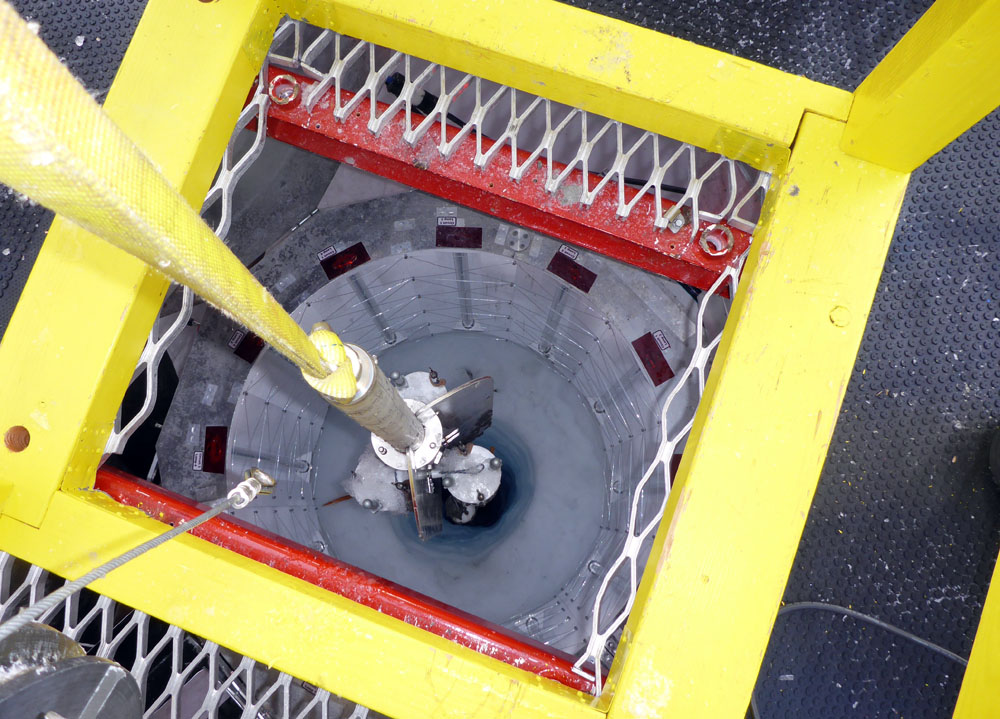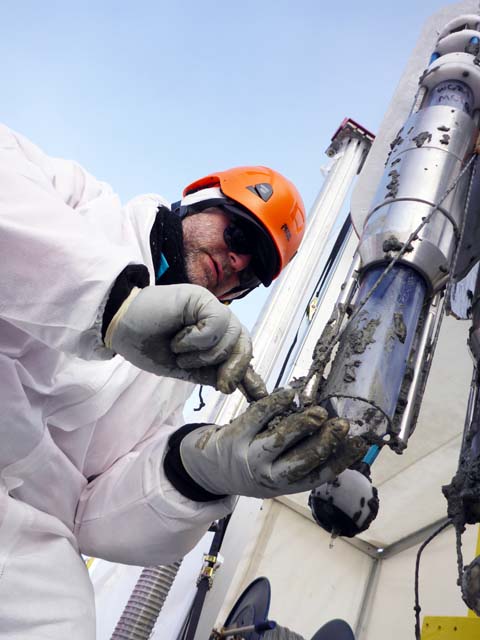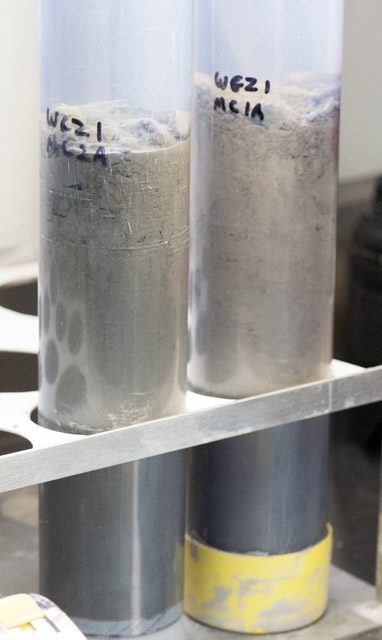In the zoneWISSARD project penetrates Ross Ice Shelf and finds life on remote seafloorPosted January 21, 2015
Two years ago, a team of scientists, engineers and technicians sent instruments into a subglacial lake nearly a kilometer underneath the West Antarctic Ice Sheet and retrieved the first-ever clean samples of sediment and water from such an extreme environment. In the process, they discovered an unexpected diversity of microbial life. Now the group – funded and supported by the National Science Foundation (NSF), which manages the U.S. Antarctic Program (USAP) – has for the first time drilled through an ice shelf near where the ice is attached to the seafloor. This is a critical area of ice-ocean-seafloor dynamics known as the grounding zone, which could have serious implications for global sea-level rise if it becomes unstable. And, once again, the scientists have found an abundance of life on an unexpected scale – fish and invertebrates – representing the farthest south such marine organisms have been found. Using a powerful hot-water drill developed and built by the University of Nebraska-Lincoln as part of the Whillans Ice Stream Subglacial Access Research Drilling (WISSARD) project, the team punched through nearly 740 meters (nearly 2,500 feet) of the Ross Ice Shelf on Jan. 8 (local time). More than 40 scientists, technicians and camp staff worked around-the-clock to collect as many samples and as much data as they could for nearly two weeks. They sent a variety of instruments, as well as a camera, down the borehole to recover water, sediment cores and even ice cores from the shallow ocean cavity beneath the ice shelf. About a week after first drilling through the ice – and troubleshooting problems with a winch – the team also deployed a remotely operated vehicle (ROV) called Deep SCINI (Submersible Capable of under-Ice Navigation and Imaging) into the seawater cavity. The tube-shaped robot is about two meters (seven feet) long and tethered to the surface with a fiber optic cable. It was Deep SCINI that captured the first images of fish and invertebrates in an area of the ocean only about 10 meters deep. Life has been found previously under the Ross Ice Shelf, but at 84.35 degrees south latitude, this is the closest location to the South Pole where such marine life has been documented. The southernmost ocean waters in the world are only 70 kilometers south under the Ross Ice Shelf at about 85 degrees south. “I have been studying life in and under Antarctic ice for 30 years. Finding fish or any other type of life under an ice shelf is by itself not novel,” noted John Priscu, a chief scientist on the WISSARD project from Montana State University. “However, our WISSARD data will establish for the first time sources of carbon and energy for higher trophic levels in this most southerly marine ecosystem.” Deep SCINI boasts three cameras and five thrusters for maneuverability. The tough, dense syntactic foam used for flotation allows it to dive about three kilometers deep, though the pressure tolerance of other instruments onboard limits its current depth to about one kilometer. It is also equipped with a gripper and can suction water and slurp mud into its payload. The deep version of the SCINI ROV was developed over the last couple of years at the University of Nebraska-Lincoln with funding from NASA by chief engineer Bob Zook and Justin Burnett, a graduate research assistant. The last three months involved 15-hour workdays to ensure Deep SCINI was ready for its first field deployment. “It doesn’t feel like work. It’s what we love to do,” Zook said. “It’s the most amount of fun that I’ve had in a long time.” In December 2010, a previous model of the SCINI robot, developed with funding from NSF, discovered a new species of sea anemone living on the underside of the Ross Ice Shelf, about 270 meters (about 885 feet) below the ice surface. [See previous article — On the flip side: New species of sea anemone found underneath Ross Ice Shelf] |



For USAP Participants |
For The Public |
For Researchers and EducatorsContact UsNational Science FoundationOffice of Polar Programs Geosciences Directorate 2415 Eisenhower Avenue, Suite W7100 Alexandria, VA 22314 Sign up for the NSF Office of Polar Programs newsletter and events. Feedback Form |





